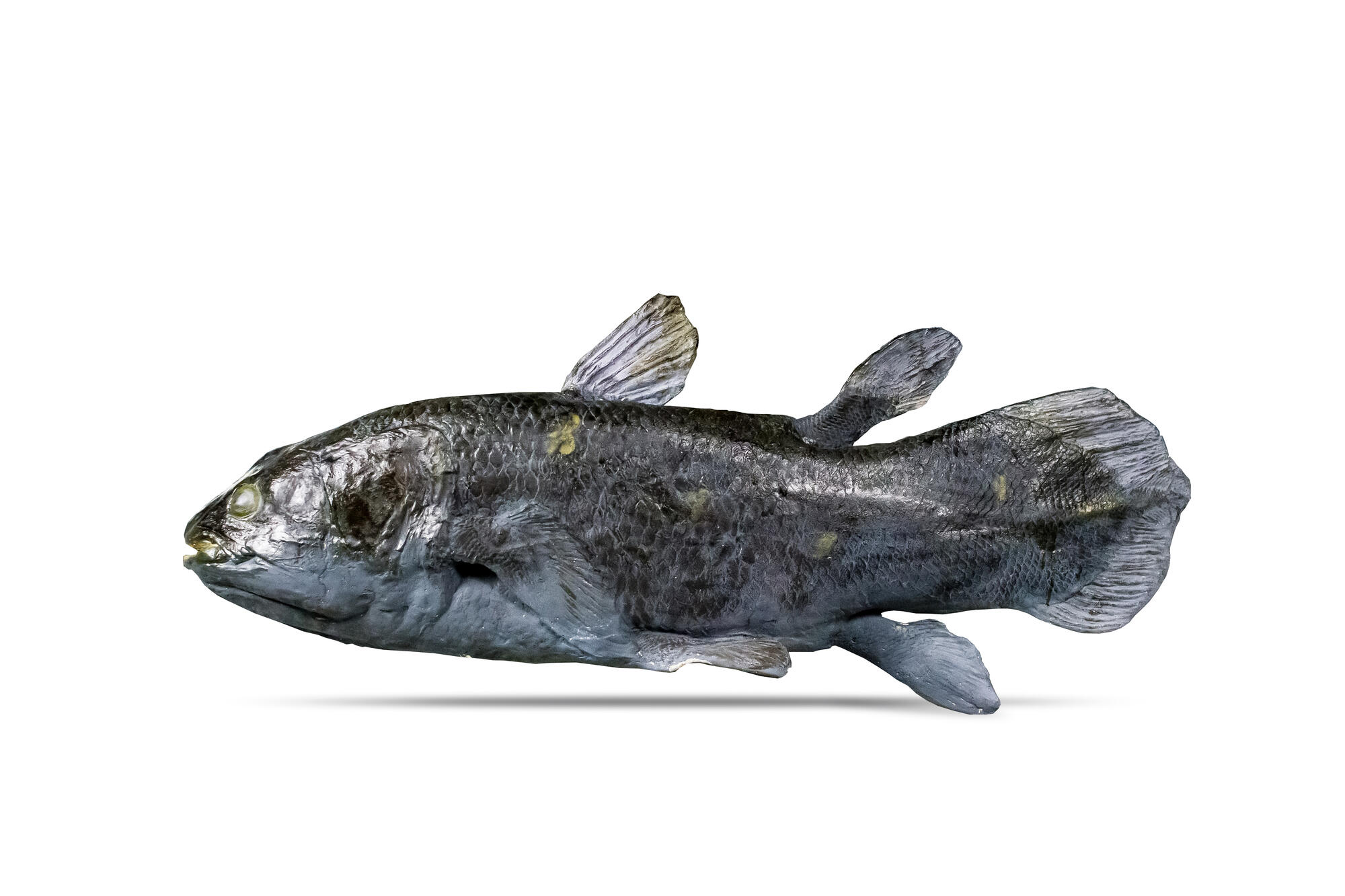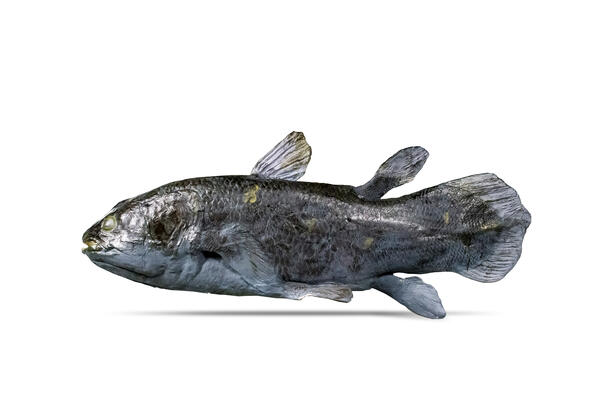Latimeria is a fossil fish from the order of coelacanths (Coelacanthiformes). It is ancestral to the cross-finned coelacanth fish (Crossopterygii), from which, according to one scientific version, evolved ichthyostegas, the first vertebrates that came to land. The coelacanths appeared about 380 million years ago and became extinct at the same time as the dinosaurs about 70 million years ago.
Scientists believed that these fish had died out. However, an unusual species was found in the catch of a South African fishing trawler in 1938. The fishermen handed it over to biologist Marjorie Courtenay-Latimer, curator at East London’s small museum, South Africa. Courtenay-Latimer reported the find to the professor of ichthyology, James Smith. When he arrived in East London, the fish was poorly preserved, but the scientist was able to recognize it as the extinct order of coelacanth. Smith named the fish Latimeria chalumnae in honor of Marjorie Courtenay-Latimer.
For the next 14 years, James Smith tried unsuccessfully to find Latimeria off the coast of South Africa. But it turned out that they lived in a completely different place, the Mozambique Channel, which separates Africa and the island of Madagascar. And the first species found got to the waters of South Africa by accident.
Latimeria is the only living species of Coelacanth. It differed from its ancient ancestors by its large size. Coelacanths usually did not grow more than 90 cm (~3 ft) in length, while Latimeria could reach 180 cm (~5 ft) and weigh from 30 to 90 kilograms. Female Coelacanths are larger than male ones. Latimeria lives as deep as 150 — 500 m (492 –1640 ft) and rarely comes to the surface.
These fish are bluish-gray, with large grayish-white spots all over their body. Their pattern for each species is unique, which allows scientists to distinguish between them when observing.
Latimeria is ovoviviparous fish. It means that their females do not lay eggs like other species, but carry them in their bodies until the embryos mature. Biologists suggest that they are not sexually mature until after 20 years of age, and their gestation time is about 13 months.
Scientists believed that these fish had died out. However, an unusual species was found in the catch of a South African fishing trawler in 1938. The fishermen handed it over to biologist Marjorie Courtenay-Latimer, curator at East London’s small museum, South Africa. Courtenay-Latimer reported the find to the professor of ichthyology, James Smith. When he arrived in East London, the fish was poorly preserved, but the scientist was able to recognize it as the extinct order of coelacanth. Smith named the fish Latimeria chalumnae in honor of Marjorie Courtenay-Latimer.
For the next 14 years, James Smith tried unsuccessfully to find Latimeria off the coast of South Africa. But it turned out that they lived in a completely different place, the Mozambique Channel, which separates Africa and the island of Madagascar. And the first species found got to the waters of South Africa by accident.
Latimeria is the only living species of Coelacanth. It differed from its ancient ancestors by its large size. Coelacanths usually did not grow more than 90 cm (~3 ft) in length, while Latimeria could reach 180 cm (~5 ft) and weigh from 30 to 90 kilograms. Female Coelacanths are larger than male ones. Latimeria lives as deep as 150 — 500 m (492 –1640 ft) and rarely comes to the surface.
These fish are bluish-gray, with large grayish-white spots all over their body. Their pattern for each species is unique, which allows scientists to distinguish between them when observing.
Latimeria is ovoviviparous fish. It means that their females do not lay eggs like other species, but carry them in their bodies until the embryos mature. Biologists suggest that they are not sexually mature until after 20 years of age, and their gestation time is about 13 months.



